Imagine this: you open your garage door on a below-freezing morning, only to be greeted not by the warm sight of your car ready to go, but by a labyrinth of forgotten items – seasonal decorations, old furniture, and boxes you promised to sort through “someday.” You shiver, realizing how much easier – and safer – it would be to park your car inside, especially in this dicey wintery weather.
This situation is far too common in households today, and it’s more than just an inconvenience. Icy driveways and slippery walkways pose a serious risk of falls, which can lead to life-altering injuries. Being able to pull your car directly into the garage eliminates much of that danger. Having a clear and functional garage can significantly increase safety, particularly for aging adults.
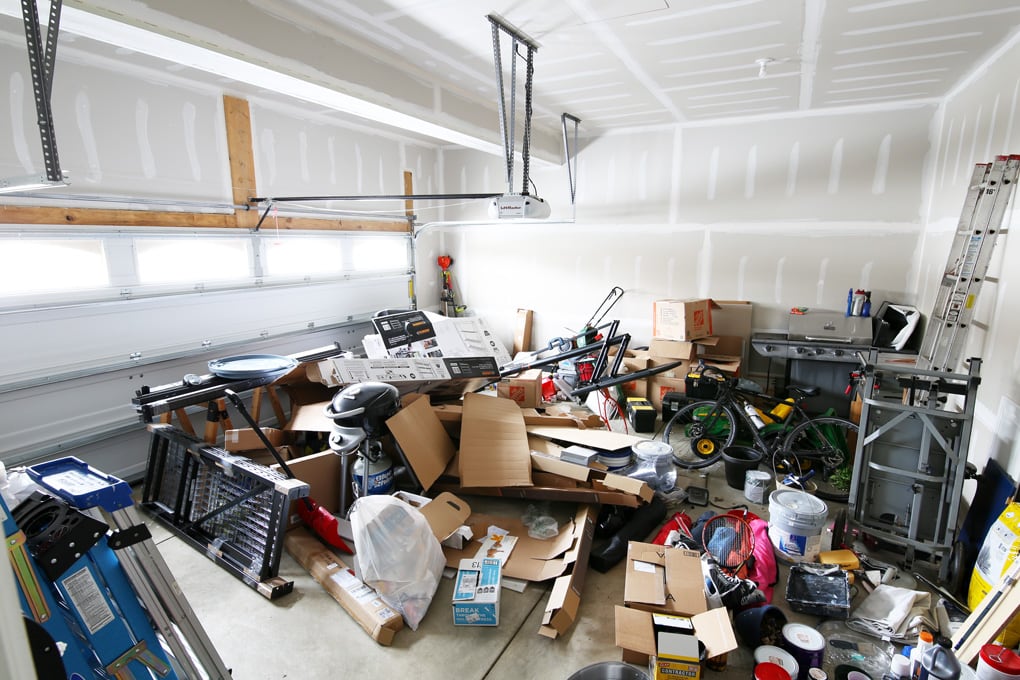
But it’s not just about avoiding hazards. A garage you can actually use for its intended purpose supports independence. For someone with mobility challenges, the ability to load and unload groceries or assistive devices directly inside a safe, enclosed space is invaluable.
For anyone, the ease of accessing items like tools or seasonal gear without tripping over clutter fosters a sense of control and freedom.
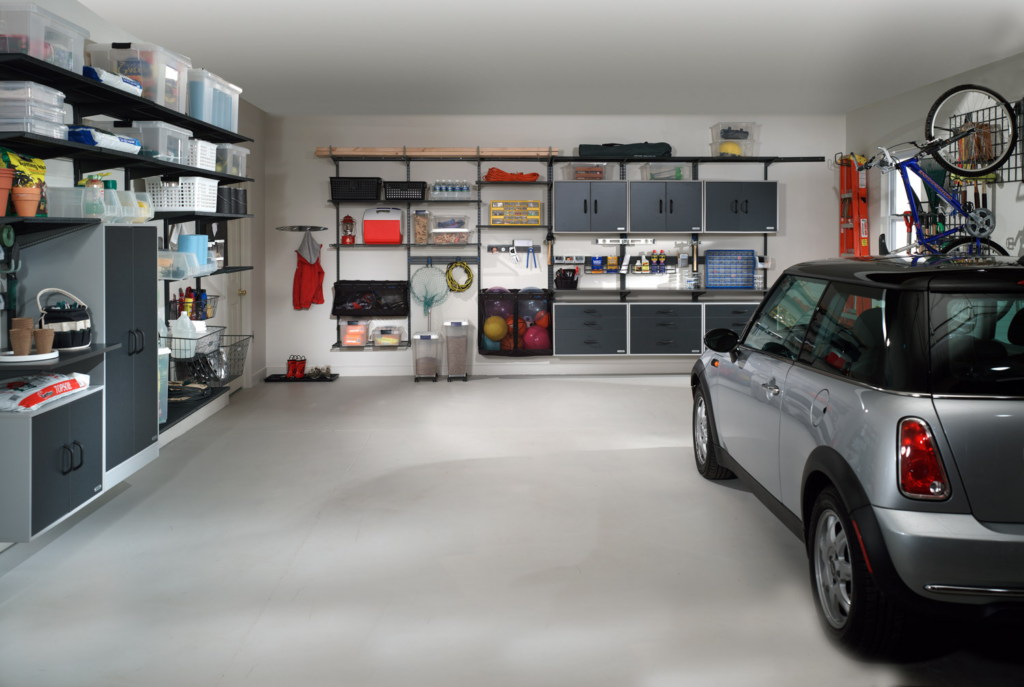
How did we get here?
The answer often lies in decades of unchecked consumerism, emotional attachments to objects, and a “just-in-case” mentality that keeps us tethered to items we rarely use. But reclaiming your garage isn’t just about tidying up—it’s about reclaiming safety, independence, and peace of mind.
Here’s the GOOD NEWS: you can reclaim your garage — and your peace of mind. In this blog, we’ll explore how consumer culture contributed to our clutter crisis and provide practical steps to take control of your space.
The Roots of Garage Clutter: Why Are We Buried in Stuff?
1. The Rise of Consumerism

Consumerism took off in the post-World War II era when economic growth met mass production. Advertisements promised happiness and success through material possessions, fueling a societal norm that equated having more with living better.
As the years passed, trends like “keeping up with the Joneses” and holiday shopping sprees became ingrained habits.
Today, the ease of online shopping has made accumulating items even more tempting. With just a few clicks, we can fill our homes — and garages — with things we might not even remember buying.
2. Emotional Attachment and Sentimental Clutter
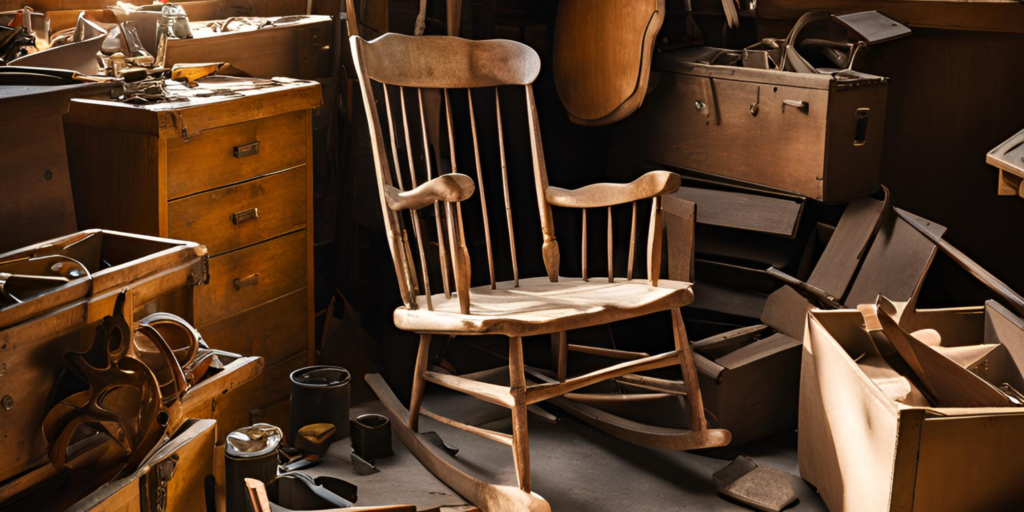
Many garages are home to items we can’t bear to part with: our children’s school projects, inherited furniture, or sports equipment from hobbies we no longer pursue. These objects hold memories, and discarding them can feel like discarding a part of ourselves.
3. The “Just-in-Case” Mentality

We hold onto things for hypothetical future scenarios. Broken lawnmowers, extra paint cans, and old tools sit in garages, waiting for a day when they might be needed. This mentality, which is often rooted in a time when rationing and scarcity made resourcefulness a necessity, creates a safety net of possessions but often at the expense of usable space.
4. Lack of Organization Systems
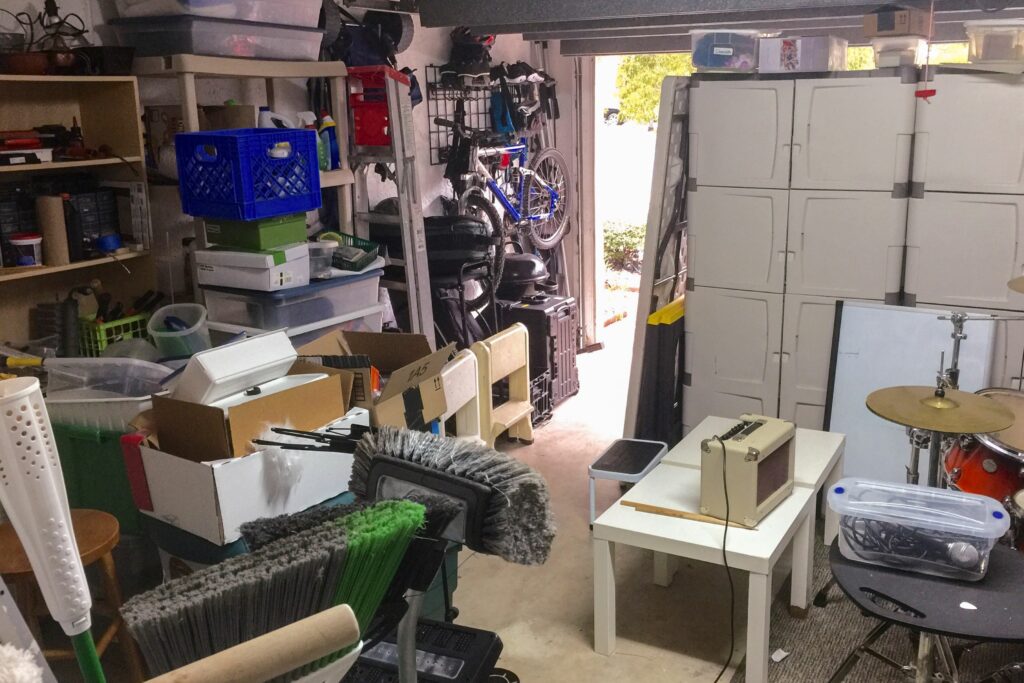
When garages lack designated zones for storage, they become dumping grounds for miscellaneous items. Without a plan for where things should go, clutter quickly spirals out of control.
The Impact of a Stuffed Garage
A cluttered garage affects more than just your ability to park a car. It creates stress, wastes time searching for items, and may even pose safety hazards. Additionally, it can signal unresolved issues—like holding onto the past or procrastinating on decisions.
Reclaiming your garage isn’t just about physical space; it’s about taking back control of your life.
Step-by-Step Guide: How to Break Free from Garage Clutter
1. Set Clear Goals for Your Garage
Ask yourself:
- What do I want this space to function as?
- Do I need room for my car, a workshop, or storage for specific items?
- What does an ideal, decluttered garage look like to me?
Defining your goals will guide your decision-making as you declutter.
2. Sort and Categorize
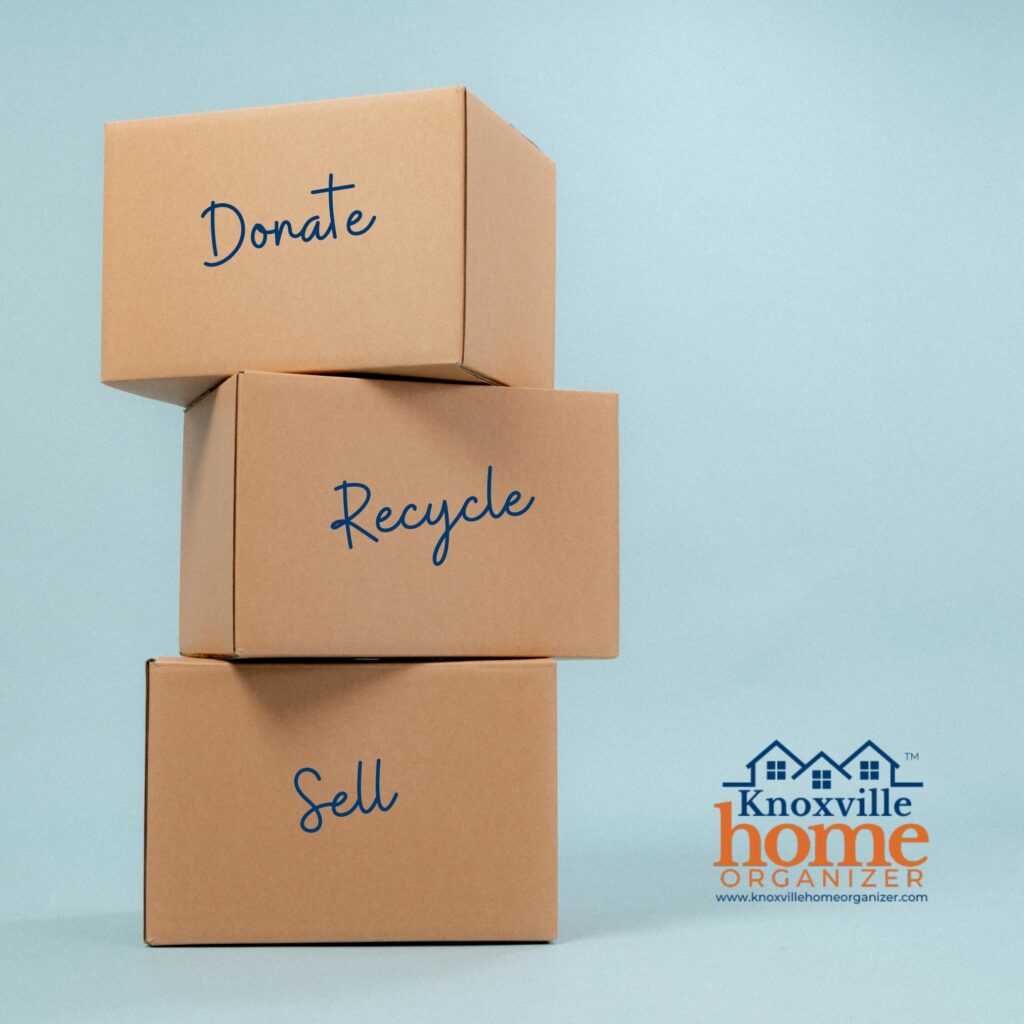
Start by taking everything out of your garage. Yes, everything. Seeing the full scope of your possessions is often eye-opening.
Create categories:
- Keep: Items you use regularly and need.
- Donate: Items in good condition that can serve someone else. Check out our post about donation etiquette before you donate.
- Sell: Valuable items you no longer need.
- Recycle/Trash: Broken or unusable items.
Pro tip: Be ruthless! If you haven’t used something in the past year, it’s probably safe to let it go.
3. Let Go of Emotional Attachments
Dealing with sentimental items can be tough. To ease the process:
- Take photos of special items before letting them go to preserve seeing the memory.
- Keep a small box for truly meaningful items, but limit its size.
- Remind yourself that memories live in your mind, not your stuff.
- For more tips, check out our blog Grappling with Sentimentality: Finding Peace in Letting Go.
4. Adopt the “One In, One Out” Rule
To prevent future clutter, commit to removing an old item whenever you bring a new one into your home. This simple rule helps maintain balance and discourages unnecessary purchases. Bottom line: it helps to identify which item is ready to be retired before you purchase a new item, which avoids accumulating too much stuff.
5. Invest in Organizational Systems
Once you’ve decluttered, set up systems to keep your garage tidy. Consider storage solutions to set boundaries:
- Shelving units: Utilize vertical space to store items like bins and tools.
- Wall-mounted racks: Hang bikes, ladders, or gardening tools to free up floor space.
- Pegboards: Perfect for organizing smaller tools and hardware.
6. Create Zones
Divide your garage into functional areas, such as:
- Parking zone: Ensure there’s space for your car.
- Storage zone: For long-term items like holiday decorations.
- Work zone: If you use your garage for hobbies or DIY projects.
Designated zones make it easier to maintain order and find what you need.
7. Schedule Regular Maintenance
Decluttering your garage isn’t a one-time event. Schedule seasonal check-ins to evaluate what’s in your garage and remove anything that’s no longer needed.
Tips to Avoid Re-Cluttering
- Shop Mindfully: Before buying anything new, ask yourself if you truly need it, where it will go, and what purpose it serves.
- Borrow or Rent: For items you’ll use infrequently—like power tools or specialty equipment—consider borrowing from a neighbor or renting instead of purchasing.
- Enlist Help: If you’re struggling, hire a professional organizer or involve friends and family to make the process less overwhelming.
Take the First Step Today
Your stuffed garage didn’t happen overnight, and it won’t be fixed overnight either. But with each small step, you’ll move closer to the clutter-free, functional space you envision.
Remember, decluttering is not about perfection; it’s about progress. Open your garage door today and take that first step toward clarity.

Are you ready to transform your space? Let’s connect!
If you need personalized help tackling your cluttered garage, I specialize in practical, done-for-you organizing services designed to make the process stress-free. Together, we’ll create a space that works for you and your family. We’re currently booking spring garage projects, so schedule your free, 15-minute call today!
In your corner,

Allison and the KHO Team
If this post content has been helpful to you and you know someone else who would benefit from this content, would you please share it? Sharing is such a simple way to spread a little encouragement!
